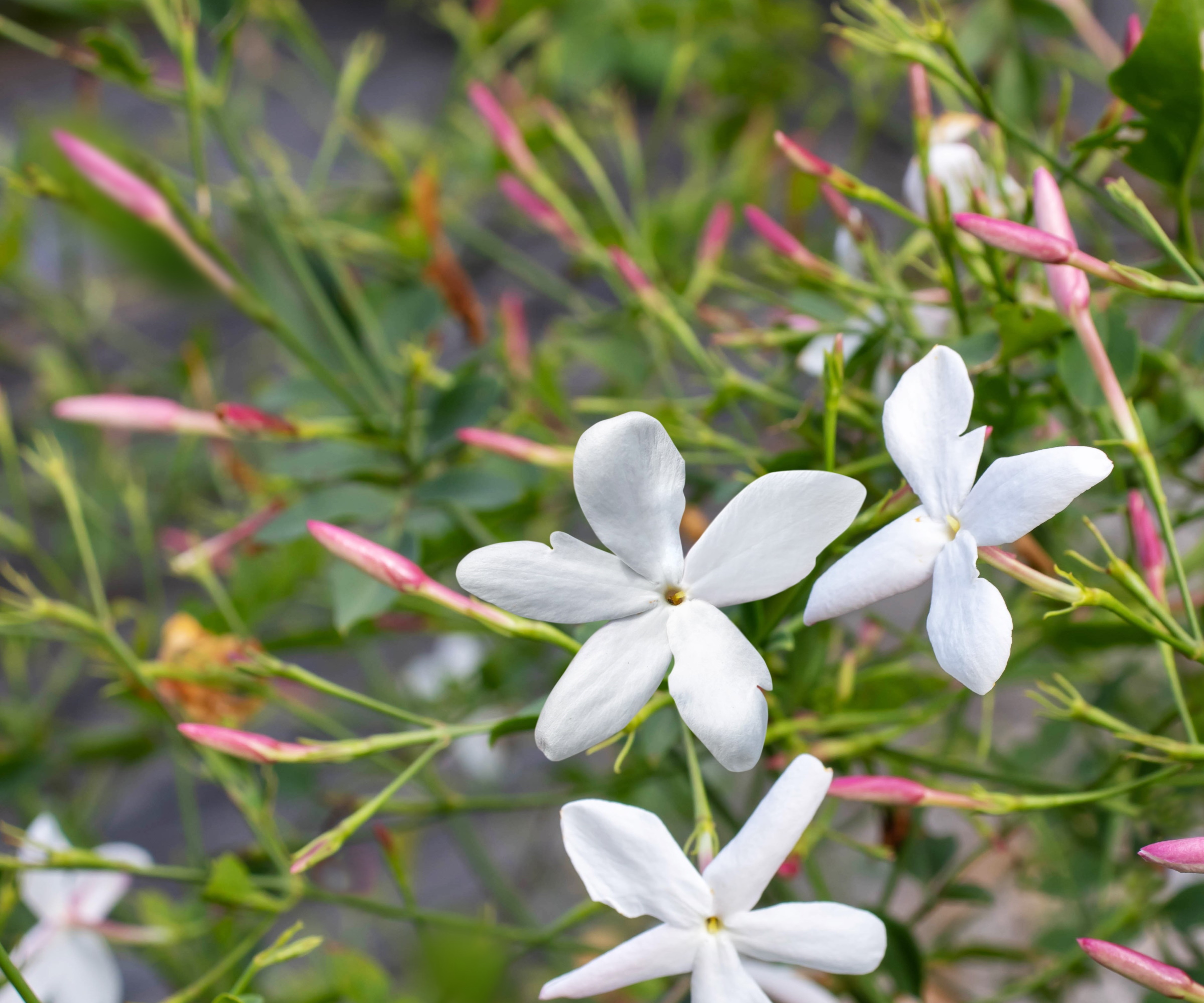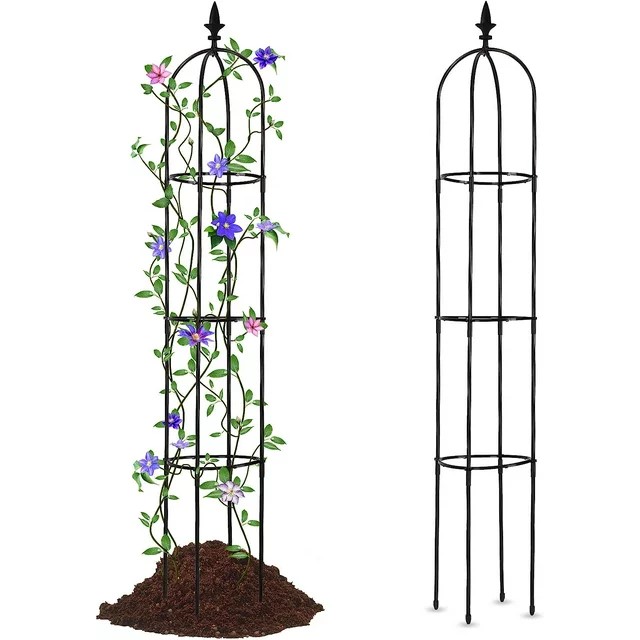How to grow jasmine in pots – the fragrant flowering climber that every space needs
Cover garden walls, trellises and structures with perfumed flowers this year by growing jasmine in pots


Jasmine is a popular climbing plant that produces fragrant blooms for much of spring and summer. Celebrated for the perfume of its flowers, jasmine is surely the plant to consider for those seeking container gardening ideas or looking to plant one of the best climbing plants.
Fortunately for those with smaller yards, patios, or even balconies, jasmine can be grown in pots. Jasmine is a relatively tolerant plant, and with the right maintenance, will reward gardeners with a flowering show that can last for many months.
So, why not learn how to grow jasmine in pots this year, and let this vining plant ramble along your garden walls, trellises and structures? Here, we share advice from garden and plant experts to provide you with all the information you need.

How to grow jasmine in pots
Jasmine is often thought of as one of the best flowering climbers for large spaces or structures, but it can be grown in containers and pots, which is good news for those with smaller backyards, terraces, or even balconies. Learning how to grow jasmine in pots needn't be complicated, and with suitable care and maintenance, this climber will provide months of enjoyment in the form of fragrant flowers from spring until fall.
Can you grow jasmine in pots?

Jasmine can be grown in containers, so long as the plant enjoys the correct conditions. Jasmine grows best in US hardiness zone 7 to US hardiness zone 10, thriving in full sun positions. The more sunlight jasmine receives, the more it will flower, which is surely the goal of any gardener looking to grow this climber.
So, when considering how to grow jasmine, so long as this popular climber is grown in a sheltered, sunny spot, growing in a container is not only possible but sometimes it is the best option, particularly for those with small spaces.
'Using plants with fragrance in any garden or yard is important,' says Mike Murphy, plant expert and owner of You Had Me At Gardening. 'Scented climbers like jasmine are not only enjoyed by us but will attract birds, bees and butterflies.' Indeed, incorporating plants for pollinators in backyards is important, and today, most gardeners are keen to do all they can to encourage wildlife.
Design expertise in your inbox – from inspiring decorating ideas and beautiful celebrity homes to practical gardening advice and shopping round-ups.
Certain jasmine varieties are more suited to growing in containers than others, so it is always recommended to check on the growing requirements and growth habits before selecting a jasmine for your yard. For example, pink jasmine, available from Nature Hills, is an ideal option for container growing. Or, for an unusual jasmine, why not consider a yellow-green night-scented jasmine, available from Burpee, that can be grown in pots and produces masses of delicate, night-scented blooms?

Mike is the owner of You Had Me At Gardening. He grew up gardening with his parents and grandparents. He enjoys his backyard orchard of dwarf fruit trees, raspberry and blackberry patches, and raised garden boxes. In addition to his perennials, Mike enjoys sprouting new fruit and vegetable seeds every spring.
Growing advice for jasmine in pots

As with all shrubs, perennials and climbers that are grown in containers, it is best to use nutrient-rich soil, such as this premium potting soil from Walmart. Do not reuse old compost or soil lifted from the garden borders.
Before filling your container, use plenty of grit and drainage material, to ensure that water can drain away freely. Before planting, it is good to consider where best to place your pot for the most suitable conditions. Remember that the more sunshine that you can give your jasmine, the more it will flower.
'Jasmine plants can be vigorous growers and do require support,' continues Mike. 'I would recommend using a trellis, obelisk or homemade structure that will allow your jasmine to grow upwards.'
'As your jasmine grows - and like many fast-growing flowering vines, it can grow quickly during the spring and summer months - be sure to tie in new growth, using twine or soft ties,' Mike adds. 'Avoid tying too tightly, as this prevents natural movement and could damage your jasmine.'
Watering plants that are grown in containers is essential during the warmer months of the year. Plants in pots can dry out very quickly, particularly those grown in full-sun positions. It is a good idea to stick to a regular watering schedule, checking on your plants every other day by feeling the soil with your hand, and watering either first thing in the morning or later in the evening, once the temperatures cool.
To boost flowering, it is advisable to fertilize jasmine during the growing season, and doing so will promote healthy growth. Feed your jasmine plants every four weeks during the growing season, using a high-potassium liquid feed, such as tomato fertilizer, which will encourage flowering. Tomato feeds are available from Walmart.
FAQs
When is a good time to plant jasmine?
It is best to plant jasmine in early spring, which will provide time for the jasmine to establish itself before the high temperatures experienced during the summer months. Alternatively, you can plant jasmine in the early fall, but be aware that younger plants are susceptible to frost damage if they have not been established before the winter. If you do plant in the fall, it is best to protect your jasmine by bringing it indoors to a greenhouse during the colder months of the year.
Planting jasmine in pots is a good idea for those with smaller yards, patios or balconies. This popular flowering climber will happily grow in a pot, filling your space with fragrant blooms for much of the growing season.
If you have a conservatory or glasshouse, why not consider growing other fragrant climbers or plants to make your greenhouse smell nice, and enjoy masses of brilliant blooms, attractive foliage, and delicate scent for the spring and summer months?

Thomas is a Content Editor within the Gardens Team at Homes and Gardens. He has worked as a professional gardener for both public spaces and private estates, specializing in productive gardening, growing food and flowers. Trained in Horticulture at the Garden Museum, he has written on gardening and garden history for various publications, including The English Garden, Gardens Illustrated, Hortus, The London Gardener and Bloom. He has co-authored a Lonely Planet travel book, The Tree Atlas, due out in 2024.
